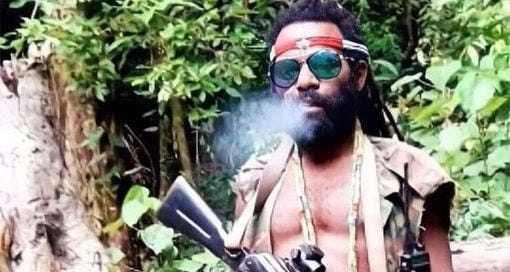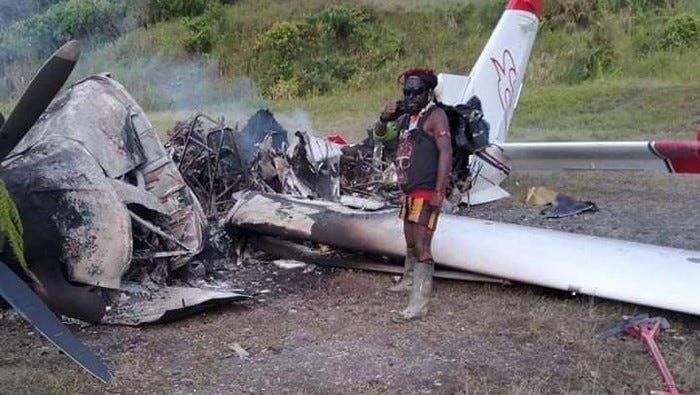It’s been an intense few months with regards to Papua. The West Papua National Liberation Army (TPNPB) conducted one if its largest attacks since the 2018 Nduga massacre. Indonesian security forces apparently found the hideout of one of the TPNPB’s most notorious and wanted commanders (coincidentally, the one responsible for the Nduga massacre). Indonesian forces also modified Serbian-made mortars to be air-dropped onto villages.
TPNPB Drip
Earlier this year, authorities said that they would change their approach towards Papua, saying that they would take less of a force-based approach and more of a ‘welfare approach’. This has not happened. You cannot change a posture used for decades, in a few months. Last year, the speaker of the People’s Consultative Assembly, Bambang Soesatyo, infamously called on security forces to “crush Papuan separatist groups… (and that) human rights issues can be discussed later.” This is not talk from a fringe element.
So, let’s go through the last few months (this is not in chronological order).
The Puncak attack
The March Puncak attack was the deadliest attack since the 2018 Nduga massacre. The TPNPB killed eight workers of a telecommunication company in Beoga District. Puncak has emerged as a hotspot of violence over the last year or two. It is in the Papuan highlands, where the TPNPB is strong; it has at least two subgroups there. The TPNPB has attacked workers of several companies in areas it is active in across Papua; it has issued several threats against Indonesian workers in Papua. It has killed many Indonesians employed on projects in the Papuan provinces. Jakarta has had a plan to “develop” Papua, and the TPNPB (and Papuan independence elements) view this as an attempt to exert more control. The perspective is that its Indonesia’s rule and institutions are a colonial project. Colonial powers set up extractive institutions, and violently suppress the local populace. Hello, East India Company. (Read “Why Nations Fail” by Daron Acemoglu and James Robinson to see the difference between extractive vs inclusive institutions.) This is how the TPNPB and many Papuans view Indonesia. The TPNPB, and the original Free Papua Movement (OPM), have always said that the resource extraction in Papua is one of the major reasons for them for taking up arms against Indonesia. The Papuan provinces are rich in resources, but most of the local populace has not seen any benefits from this; the provinces are the least developed provinces in Indonesia. So, the attack is not something unexpected, it falls in line with their actions for a while (and the threats they have issued), just the casualty number is notable.
New Provinces
On the same lines, the TPNPB (and Papuan independence elements) view Jakarta’s plan to divide the two provinces in Papua (Papua and West Papua) into smaller divisions as a way to exert more control. Here’s the plan:
There’s been a lot of protests in Papua, and some outside Papua, against this plan. The TPNPB just issued threats that they would attack proponents of this plan in Papua (even if they are Papuan). The TPNPB has attacked Papuans in the past, and they are likely to do so on this case. The plan to create more provinces could also spark widespread unrest in Papua. Security forces have killed protesters at some demonstrations against the plan. The creation of new regencies in the past led to violence, so similar is likely.
Attacks on aircraft
Over the last couple years, there have been several instances in which the TPNPB attacked aircraft in Papua. In many places, there are no roads. Air travel is the most convenient way from place A to B, especially in the highlands. There are small airstrips across the provinces. The TPNPB claims that Indonesian forces use civilian craft for transporting troops and logistics (which is not unfounded). In 1996, Indonesian forces under Prabowo Subianto (colorful character: once son-in-law to former dictator Suharto, current Defense Minister, multiple-time unsuccessful presidential candidate; accused of violating human rights during his military career) used civilian helicopters in a military operation. Hence the TPNPB targets aircraft or airstrips. This is very effective in the highlands, as it prevents Indonesian forces from supplying logistics or sending reinforcements when there are attacks.
January 2021
Serbian Munitions
Reuters on June 3 reported that nearly 2,500 Serbian-made mortar shells were used by Indonesian authorities in Papua over the last year. The shells were modified so that they could be airdropped. In the decades before, Indonesian forces have been accused of bombing entire villages. Forces would strafe villages, but because of the lack of access to Papua, some say this is just an allegation (it’s not). Speaking of foreign weapons, Papuans have protested against Thales, which has provided various munitions to the Indonesian military, that are used against Papuans. There are also various other allegations of Indonesian war crimes.
Indonesia Propaganda
So, in May, Indonesian news reports started coming out, saying that there were rifts within the TPNPB. Indonesian psyops are common; after Vanuatu called out Indonesia for its occupation of Papua, there was a concentrated (and racist) effort to denigrate people of Vanuatu. The government has been accused of using ‘buzzers’ to manipulate social media trends to portray their narrative. The TPNPB is an organization with many leaders with differing aspirations who gather under the “Free Papua” banner. There may be differences between some leaders or groups, but outright rifts there are not). These kinds of Indonesian tactics give more credence to Papuan independence aspirations, especially after they are uncovered. Even if some TPNPB subgroups have divergent aims, it does not matter; Indonesia is the enemy.
Egianus Kogoya
The TPNPB has many subgroups, but the one active in Nduga is one of the most prominent ones, mainly due to its leader, Egianus Kogoya. Egianus is in the early to mid-20s; yet he has gained more notoriety than longstanding TPNPB commanders. Indonesian authorities apparently found where he was based in, in May, through drone surveillance. But Indonesian forces have not been able to get to him yet. A few days ago, his group shot at aircraft at the Kenyam airport, or airstrip, in the Nduga highlands. His TPNPB is one of the most active subgroups, and they are deeply entrenched in the regency. He is young, violent, and dangerous, and a posterchild of the TPNPB. The TPNPB has lost leaders, and they have been replaced without much disruptions to its operation. But, it will be hard to replace Egianus. He has been active since at least 2018 in Nduga, and if things continue going his way, he will be there for a while. He’s become a folk hero, and a symbol of the resistance. Che Guevara’s last words before he was murdered was something on the lines of ‘only a man dies, the idea cannot be killed’. Egianus has become that idea to some.
The Wabu Block
A large gold ore deposit is said to be nestled in the mountains of Intan Jaya. Indonesia has plans to exploit this, the Wabu Block. There are some logistical issues, but Indonesia wants to go ahead with this. Remember that resource extraction has been one of root causes of conflict in Papua. Hence, the exploitation of the Wabu Block will add to Papuan opposition towards Jakarta. The TPNPB is also entrenched in Intan Jaya; the regency has been a hotspot for conflict for the last few years. The exploitation of the Wabu Block will worsen the security environment, and lead to more conflict in Papua.
From: Amnesty International








